
The Federal Department of Environment, Transport, Energy and Communications is one of the seven departments of the Swiss federal government, headed by a member of the Swiss Federal Council.

The Civil Aviation Authority (CAA) is the statutory corporation which oversees and regulates all aspects of civil aviation in the United Kingdom. Its areas of responsibility include:
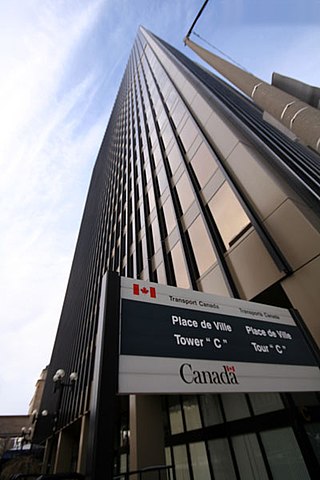
Transport Canada is the department within the Government of Canada responsible for developing regulations, policies and services of road, rail, marine and air transportation in Canada. It is part of the Transportation, Infrastructure and Communities (TIC) portfolio. The current Minister of Transport is Pablo Rodriguez. Transport Canada is headquartered in Ottawa, Ontario.

Australian Maritime Safety Authority (AMSA) is an Australian statutory authority responsible for the regulation and safety oversight of Australia's shipping fleet and management of Australia's international maritime obligations. The authority has jurisdiction over Australia's exclusive economic zone which covers an area of 11,000,000 square kilometres (4,200,000 sq mi). AMSA maintains Australia's shipping registries: the general and the international shipping registers.

Airservices Australia is an Australian Government-owned corporation, responsible for providing services to the aviation industry within the Australian Flight Information Region (FIR). Some of Airservices Australia’s responsibilities include air traffic control, airway navigation, communication facilities, publishing aeronautical data, airport rescue, and fire-fighting services. Airservices Australia has international partnerships with ICAO, CANSO and IATA.
Air traffic control in Australia is provided by two independent organisations, one civilian and one military. The civilian provider is Airservices Australia, which controls civilian airfields and airspace. The military provider is the Royal Australian Air Force (RAAF), which controls military airfields and adjoining airspace. This includes Australian Army and Royal Australian Navy aviation bases.
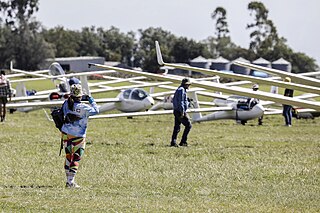
The Gliding Federation of Australia, also known as Gliding Australia, is the governing body for the sport of gliding in Australia. It was founded in 1949. Gliding Australia is responsible to Civil Aviation Safety Authority for the conduct of safe gliding operations in Australia. This includes the setting and maintenance of flying standards and in particular training standards, for gliding and soaring flight in heavier-than-air fixed-wing gliders and sailplanes, powered sailplanes and touring motor gliders, but excluding flexible wing, weight shift hang gliders and paragliders.

The Australian Transport Safety Bureau (ATSB) is Australia's national transport safety investigator. The ATSB is the federal government body responsible for investigating transport-related accidents and incidents within Australia. It covers air, sea and rail travel. The ATSB is an independent Commonwealth Government statutory agency, governed by a Commission and is separate from transport regulators, policy makers and service providers.
Moree Airport is an airport in Moree, New South Wales, Australia. The airport is 5 km (3.1 mi) from the city center. The airport has some scheduled services but mainly provides general aviation facilities, maintenance and support for agricultural aviation in the local area. The Moree Aero Club has been based at the airport since 1952, and today provides aircraft hire and flight training. The club was instrumental in providing many early improvements to the aerodrome facilities, including hangars and a terminal building. In the 2021-22 Financial Year, Moree Airport handled 18,073 passengers, down from approximately 35,000 per year before travel restrictions were introduced as a result of the response to the COVID-19 pandemic.

Paraburdoo Airport is an airport serving Paraburdoo, a town in the Pilbara region of Western Australia. The airport is located 5 nautical miles northeast of Paraburdoo. It also serves the town of Tom Price, with bus services completing the extra 71 km to Tom Price.
In aviation, an air traffic service (ATS) is a service which regulates and assists aircraft in real-time to ensure their safe operations. In particular, ATS is to:

An air operator's certificate (AOC) is the approval granted by a civil aviation authority (CAA) to an aircraft operator to allow it to use aircraft for commercial purposes. This requires the operator to have personnel, assets and systems in place to ensure the safety of its employees and of the flying public. The certificate lists the approved aircraft types, each registration number approved to fly, the approved flying purpose and in what area the holder may operate.
Bunbury Airport is an airport servicing the Western Australian city of Bunbury. Bunbury Airport is located 8 km (5 mi) south-east of the city centre and is the only airport serving the city. The airport is used largely as a facility for General Aviation, pilot training and emergency services. Bunbury Airport serves an area that includes the City of Bunbury and the surrounding districts of Harvey, Dardanup, Capel and Donnybrook-Balingup.
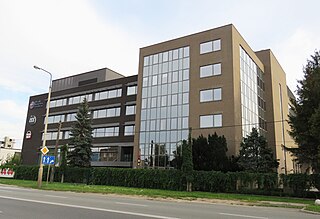
The Civil Aviation Authority (CAA) of the Republic of Poland, as a civil aviation authority, is an agency of the Polish government under the Ministry of Infrastructure and Development responsible for implementing policies on civil aviation to assure safe, economic and efficient air travel. The Civil Aviation Authority is responsible for providing and maintaining safe and efficient aviation services to, from and within Poland. The president of the CAA performs functions of aviation administration and aviation supervision authority in the following areas among others:

The Lockhart River air disaster occurred on 7 May 2005, when Aero-Tropics Air Services Flight 675 crashed while on approach to land at Lockhart River Airport in Queensland, Australia, on a ridge known as South Pap 6 nautical miles (11 km) north-west of the airport. All fifteen on board died as the aircraft was completely destroyed by impact forces and subsequent fire. The Fairchild Swearingen Metroliner commuter aircraft, registered VH-TFU, was owned by Transair Ltd and operated by Aero-Tropics. The flight was scheduled from Bamaga on Cape York to the regional centre of Cairns, with a stopover in Lockhart River. It was the worst air crash in Australia in 36 years since MacRobertson Miller Airlines Flight 1750 on 31 December 1968.
A civil aviation authority (CAA) is a national or supranational statutory authority that oversees the regulation of civil aviation, including the maintenance of an aircraft register.
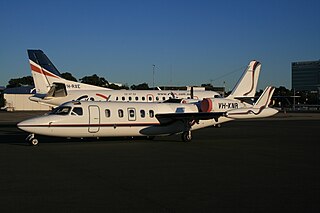
The 2009 Pel-Air Westwind ditching or Norfolk Island ditching was an aircraft accident on 18 November 2009 near Norfolk Island, Australia. A Westwind II jet operated by Pel-Air was conducting an air ambulance flight for CareFlight International when it was forced to ditch after being unable to land in bad weather and not having sufficient fuel to divert to an alternate destination.
The General Civil Aviation Authority (GCAA) is the civil aviation authority of the United Arab Emirates (UAE). Its head office is in Al Rawdah, Abu Dhabi.
The Papua New Guinea Accident Investigation Commission (PNGAIC) is an agency of the Government of Papua New Guinea (GoPNG) investigating aviation accidents and serious incidents. The office is located in Level 1, NAQIA Building, Morea-Tobo Road, 6 Mile, National Capital District.
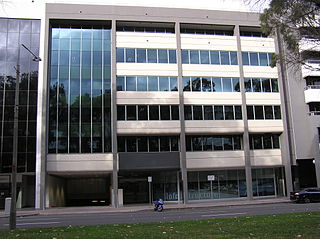
The Department of Infrastructure and Transport was an Australian government department. It was formed in September 2010, following the federal election in August 2010. The department absorbing parts of the Department of Infrastructure, Transport, Regional Development and Local Government. Regional development and local government functions were sent to the Department of Regional Australia, Regional Development and Local Government. Following the 2013 federal election, the department was renamed on 18 September 2013 to become the Department of Infrastructure and Regional Development, regaining regional development and local government functions.















